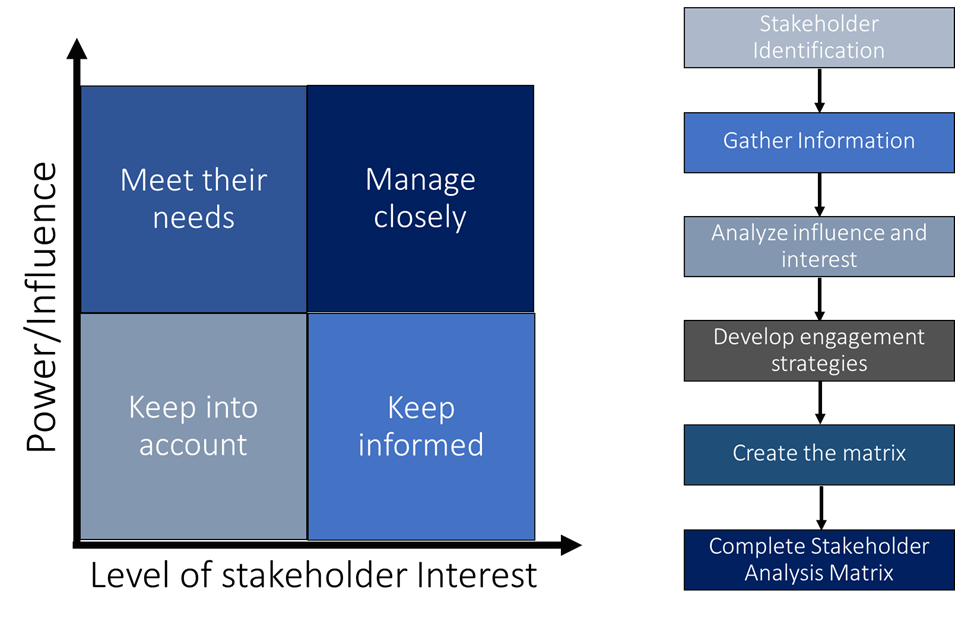Participatory and inclusive design approaches in the context of Green Climate Fund (GCF) Concept Note development refer to the intentional involvement of all relevant stakeholders, especially vulnerable, marginalized, and underrepresented groups, within the planning and design of climate projects from the earliest stages. Participatory and inclusive design is not just a procedural step as it is a foundational principle of climate justice and effective climate finance. It ensures GCF-funded projects are more impactful, equitable, and resilient in the face of climate challenges.
Having participatory and inclusive design ensure that the project is developed “with” and “for” the people it intends to serve, rather than being imposed top-down. This is aligned with the GCF’s core values of country ownership, gender responsiveness, inclusivity, and stakeholder engagement. These approaches bring legitimacy where projects are more accepted and supported when communities are co-creators. They bring effectiveness where tailored interventions are more likely to succeed and address real climate challenges. They bring sustainability where projects are more likely to be maintained post-funding. They bring GCF compliance where the project meets GCF Investment Criteria.
In GCF Concept Notes, participatory and inclusive design is not just good practice but it’s a requirement. The GCF expects concept notes to demonstrate early and meaningful stakeholder engagement, show how the project addresses the needs of vulnerable groups and include strategies for ensuring ongoing participation and inclusion throughout the project lifecycle.
Participatory and inclusive design also contributes to project ground realities that links with GCF Sectoral Guides1 and GCF Strategic Plan 2024 – 20272, which has been prioritized in the new GCF Concept Note format.
Developing participatory and inclusive design approaches in a GCF Concept Note involves a structured, transparent, and inclusive process that actively involves stakeholders (especially vulnerable groups) throughout the project planning stage. The following step by step guide can assist in developing Participatory and Inclusive Design Approaches in a GCF Concept Note.
Stakeholder Mapping and Analysis
First, it is important to start with identifying all relevant stakeholders. Below are the stakeholders that are commonly involved, but not limited to, in designing a concept note and funding proposal:
- Government institutions (national, sub-national)
- Local communities
- Indigenous peoples
- Women’s groups and gender experts
- Youth, elderly, and persons with disabilities
- NGOs, CSOs, and private sector entities
These stakeholders have their own interests, influence, vulnerabilities, and capacities. It is important to identify and analyze these factors to help with stakeholder mapping. To analyze these factors, tools like stakeholder matrices can be used to identify stakeholders, analyze their interest, influence and impact and prioritize engagement strategies based on that analysis. Tools to analyze and map stakeholder interactions are commonly used in project management and organizational planning. The figure below provide an illustration of the steps in mapping and analyzing stakeholder matrix. The main types of stakeholder matrices are:
- Power/interest grid.
Despite being one of the most commonly used stakeholder analysis matrices, Power/interest grid proves successful in many cases. It plots stakeholders on two axes. 1) Power: Their ability to influence the project; 2) Interest: Their level of concern about the project’s outcomes
- Influence/Impact Matrix
The influence/impact matrix is useful when the analysis is aiming to focus on 1) Influence: How much they can affect project implementation and 2) Impact: How much the project affects them

Conduct Stakeholder Consultations
After the stakeholders are identified, the project developer needs to organize inclusive consultations, preferably at the concept stage. These consultations can be done in the form of:
- Community meetings, focus groups, interviews, and surveys
- Ensure gender balance and inclusion of marginalized voices
- Use culturally appropriate methods (local languages, visual tools)
In addition, it is important to apply Free, Prior, and Informed Consent (FPIC) principles when there are potential activities where Indigenous peoples are affected. FPIC is a key principle in international human rights law, particularly related to the rights of Indigenous peoples. It ensures that communities have the right to give or withhold consent to projects that may affect them or their territories. In doing the FPIC it is critical to document concerns, suggestions, and priorities raised during the process.
Integrate Social and Gender Analysis
Conducting a gender and social inclusion analysis is a critical step in designing equitable climate projects. This involves two key steps:
- Identify differentiated impacts of climate change
- Assess barriers to participation and access to project benefits
The insights gained from this analysis should inform the development of gender-responsive and socially inclusive project interventions. To ensure these considerations are embedded from the outset, a Gender Action Plan (GAP) should be included in the concept note. While the GCF formally requires it at the full proposal stage, early integration during the concept note phase is strongly encouraged.
Co-Design Project Activities and Outputs
Incorporating stakeholder feedback is essential to ensure that climate projects are responsive to local needs and contexts. Engaging stakeholders helps to:
- Define objectives and outcomes that meet local needs
- Ensure adaptation/mitigation activities are culturally and socially relevant
- Prioritize locally-led solutions and nature-based approaches
In addition, to strengthen project effectiveness and adaptability, feedback loops and iterative design methods should be embedded throughout the project cycle.
Develop an Inclusive Implementation and Governance Plan
Establishing transparent governance structures is crucial for the credibility and effectiveness of climate projects. These structures should include stakeholder representation to ensure inclusive decision-making and accountability. Clearly defining the roles and responsibilities of all actors, particularly communities and local organizations, helps build trust and clarity throughout the project lifecycle. In addition, plans should be in place for ongoing stakeholder engagement, the establishment of accessible grievance redress mechanisms, and sustained capacity-building efforts to support long-term project success and local ownership.
Document the Approach in the Concept Note
In Section C.3 of the GCF Concept Note template (Country Ownership and Engagement with Stakeholders), the proponent should include the information below:
- Description of consultation process and participants
- Summarize how feedback was incorporated
- Highlight social/gender risks and mitigation measures
Additionally, the section should highlight any identified social or gender-related risks and outline corresponding mitigation measures. To strengthen the credibility and completeness of this section, annexes should include supporting documentation such as stakeholder analysis, gender analysis, consultation reports, and engagement or participation plans, where available.
Align with GCF Policies
To ensure coherence and eligibility, project proposals should align with key GCF policies and national climate strategies. This includes adherence to the GCF Gender Policy and Action Plan3, the GCF Indigenous Peoples Policy4, and the GCF Environmental and Social Policy5, all of which promote equity, inclusion, and sustainability in project implementation. Additionally, proposals should be aligned with the country’s Nationally Determined Contributions (NDCs) and National Adaptation Plan (NAP), ensuring that the project supports national climate priorities and contributes to long-term resilience and low-emission development goals.
Template
The following template format can be adhered to in tailoring participatory and inclusive design approaches for GCF Concept Note as a part of good practice and requirement.
Introduction and Rational
The introduction should briefly explain why participatory and inclusive design is essential for the specific project. For example:
- Promotes sustainability and ownership.
- Aligns with GCF environmental and social safeguards (ESS).
- Enhances gender equality, Indigenous rights, and vulnerable group inclusion.
Stakeholder Identification and Mapping
Considering stakeholder identification and mapping is a foundational step in ensuring inclusive and effective project design. Explicitly state the objective, tools, and output from the analysis. For example:
- Objective: Identify all relevant stakeholders, especially those affected or marginalized.
- Tools: Stakeholder matrix (Power/Interest or Influence/Impact grid). Social mapping or community mapping tools.
- Output: A stakeholder list/table including name/group, role/interest, influence level, vulnerability level, preferred engagement methods.
Engagement strategy and FPIC
An effective engagement strategy aims to ensure meaningful and inclusive participation of all stakeholders throughout the project lifecycle. It is important to explicitly state the objective, key elements, and engagement activities in engaging the stakeholders. For example:
Objective: Ensure meaningful and inclusive participation throughout the project lifecycle.
Key Elements: Free, Prior, and Informed Consent (FPIC) which is required for Indigenous Peoples and other affected groups. Gender-Responsive Planning: Apply gender analysis and ensure women’s participation. Inclusion of Youth, Elderly, Disabled, and other vulnerable groups.
Engagement Activities:
| Phase | Activity | Target Group | Method | Frequency |
|---|---|---|---|---|
| Concept Dev. | Focus groups | Indigenous women | In-person workshops | Once |
| Design | Validation meetings | Local government & CSOs | Town halls, online surveys | Bi-monthly |
| Implementation | Monitoring committee | Community members | Participatory monitoring | Quarterly |
Capacity Building
Capacity building is essential to enable informed participation and promote equitable power-sharing among stakeholders. It is important to explicitly state the objective and actions planned to build the capacity to support the project execution. For example:
Objective: Enable informed participation and equitable power-sharing.
Actions: Pre-engagement orientation sessions. Training for community representatives on climate finance, safeguards, and project scope. Language and translation support.
Documentation and Feedback Mechanisms
Documentation and feedback mechanisms are critical for ensuring transparency, accountability, and adaptive learning throughout the project. It is important to explicitly state the objective and mechanism to ensure the documentation and feedback mechanisms executed. For example:
Objective: Ensure transparency and adaptive learning.
Mechanisms: Meeting minutes and attendance records. Feedback logbooks. Grievance redress mechanism (GRM) accessible to all stakeholders. Iterative consultations and mid-term reviews.
Integration into Project Design
Integration of stakeholder inputs into project design is essential to ensure relevance, ownership, and effectiveness. It is important to explicitly state the objective and methods to ensure the integration of feedback from stakeholders into projects. For example:
Objective: Ensure transparency and adaptive learning.
Objective: Reflect stakeholder inputs into project design and activities.
Method: Integrate recommendations into project logframe, budget, and risk assessments. Highlight changes made in response to consultations.
Monitoring and Evaluation (M&E)
Monitoring and Evaluation (M&E) of stakeholder engagement ensures that participation remains effective, inclusive, and aligned with project goals. . It is important to explicitly state the objective and indicators to track the M&E process. For example:
Objective: Track effectiveness and inclusivity of participation.
Indicators (examples): % of stakeholders reporting satisfaction with engagement process. Number of women/Indigenous people in decision-making bodies. FPIC obtained and documented.
Annexes
Some key supporting documents that demonstrate the project’s commitment to inclusive and transparent stakeholder engagement can also be included as annexes to support the argument. For example:
- Stakeholder engagement plan.
- FPIC documentation.
- Gender action plan.
- M&E framework with inclusive indicators.
- 1GCF. (2022). Sectoral Guides Summaries. Sectoral Guide Series. Yeonsu: Green Climate Fund.
- 2GCF. (2023). Strategic Plan for the Green Climate Fund 2024 – 2027. Decisions of the Board – thirty sixth meeting of the board, 10 – 13 July 2023. Yeonsu: Green Climate Fund.
- 3GCF. (2019). Gender Policy. Retrieved from the website: https://www.greenclimate.fund/document/gender-policy
- 4GCF. (2018). Indigenous Peoples Policy. Retrieved from the website: https://www.greenclimate.fund/document/indigenous-peoples-policy
- 5GCF (2018). Environmental and Social Policy. Retrieved from the website: https://www.greenclimate.fund/document/environmental-and-social-policy

